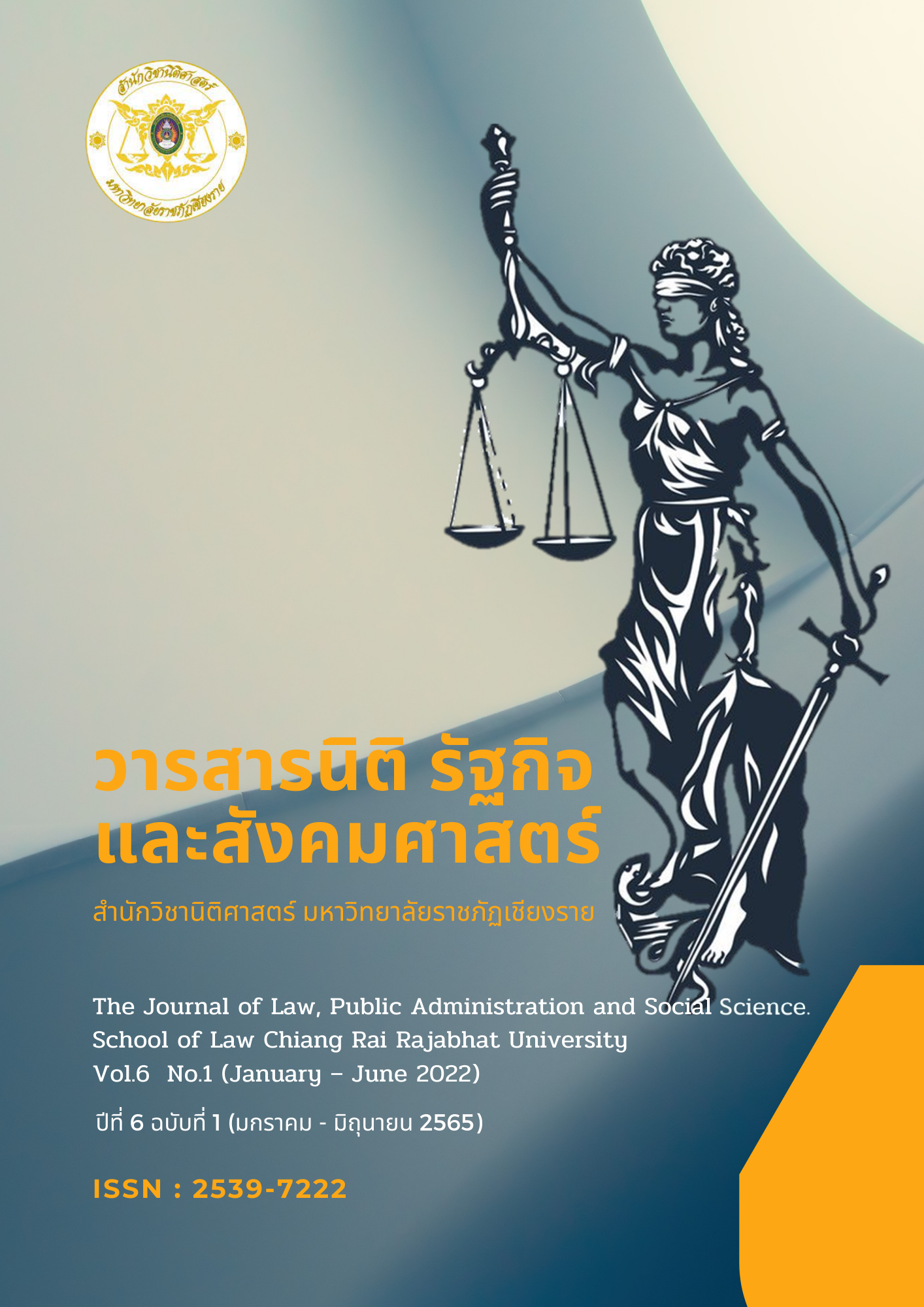The role and importance of leadership for the 21st century
Main Article Content
Abstract
This article aims to study leadership for the century 21 that is a form of leadership in the new era that corresponds to the changes in the 21st century by the “leader” who is an important person in the organization. It has a role to play under rapidly changing economic and social conditions. which “Leadership” is necessary and extremely important to organizations Because technology is constantly changing. thus causing changes to the economy and society. Today's leaders need to adjust and change the management to keep up with the modern and modern in order to create efficiency and effectiveness for the organization.
The knowledge / findings from this article to guide new leadership formation have been synthesized from Basic Leadership Theory In order to have characteristics consistent with the globalization era And the world in the 21st century with key elements Which consisted of 1) aspects of self-leadership 2) team leadership 3) organization leadership
Article Details
References
กัณฑ์กณัฐ สุวรรณรัชภูม์. “ผู้นำกลยุทธ์: รูปแบบของผู้นำยุคใหม่.” วารสารบริหารการศึกษา มศว 10, ฉ.18 (2556): 1-12.
พระพลากร สุมงฺคโล (อนุพันธ์). “ความคิดเห็นของบุคลากรที่มีต่อการบริหารงานตามหลักอธิษฐานธรรม ขององค์กรปกครองส่วนท้องถิ่นในเขตอำเภอจังหารจังหวัดร้อยเอ็ด.” วิทยานิพนธ์พุทธศาสตรมหาบัณฑิต สาขาวิชา รัฐประศาสนศาสตร์มหาวิทยาลัยมหาจุฬาลงกรณราชวิทยาลัย, 2557.
วิโจน์ สารรัตนะ. ภาวะผู้นำ: ทฤษฎีและนานาทัศนะร่วมสมัยปัจจุบัน. กรุงเทพฯ: ทิพยวิสุทธิ์, 2557.
สมบัติ กุสุมาวลี. “การสํารวจแนวคิดภาวะผู้นําในองค์กรระดับโลก ศึกษาจาก Harvard Business Review 2010-2012.” การประชุมวิชาการระดับชาติในวันคล้ายวันสถาปนาสถาบันบัณฑิตพัฒนบริหารศาสตร์ ประจําปี 2556, 2556.
สุภัชชา พันเลิศพาณิชย์. จิตวิทยาการเรียนการสอน. พิมพ์ครั้งที่ 5. กรุงเทพฯ: เมธีทิปส์, 2558.
สัมฤทธิ์ กางเพ็ง และสรายุทธ กันหลง. ภาวะผู้นำแบบโลกาภิวัตน์: แนวคิดเชิงทฤษฎี. เอกสารประกอบการสอนรายวิชาภาวะผู้นำ. มหาวิทยาลัยจุฬาลงกรณ์ราชวิทยาลัย วิทยาเขตขอนแก่น, 2555.
ASoftBiz. “เทคโนโลยีสารสนเทศกับองค์กร แนวโน้ม การนำมาใช้ การปรับตัวให้ทันต่อการเปลี่ยนแปลง.” 2014. www.softbizplus.com/it/1320-it-for-organization. สืบค้นเมื่อ 5 มิถุนายน 2021.
Davidson, C. Strategic Management: Concept and Case. 10th ed., New Jersey: Pearson Prentice Hall, 2012.
Deal Jenilee. “A Hierarchy Model for Leadership Development.” 2019. https://medium.com/.../a-hierarchy-model-for-leadership-development-cee911071e4a. accessed June 12, 2019.
Flippo, E. B. Principle of personnel administration. New York: McGraw–Hill, 1967.
Ivancevich, J. M., Konopaske, R. and Matteson, M. T. Organizational behavior and management. 8th ed., Boston: McGraw-Hill, 2008.
Maria, R. Shirey. “Strategic Leadership for Organizational Change: Addressing Strategy Execution Challenges to Lead Sustainable Change.” 2011. https://www.Nursingcenter.com /journalarticle?Article_ID=1102317&Journal_ID=54024&Issue_ID=1102316. accessed March 21, 2019.
Sachs, Benjamin M. Educational Administration : A Behavioral Approach. Boston: Houghton Miffin Company, 1966.


